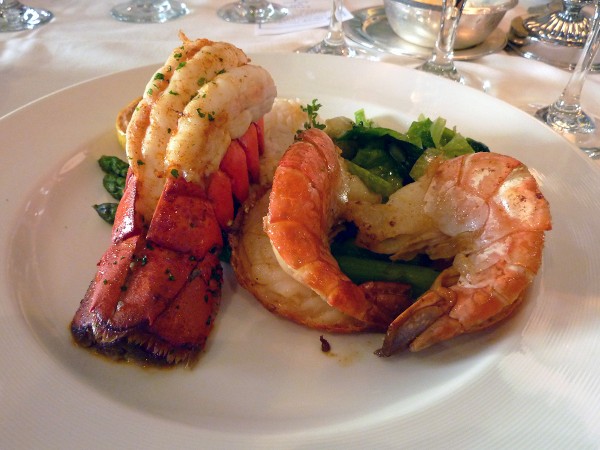 Over the past few years lobster prices in Maine have tumbled. Eight years ago the price paid to fishermen was around $4.60 per pound. Today it’s around $2.20. The problem is one of booming lobster populations and the dominance of lobster in catches. Last year’s haul was double that of a decade ago and, in some waters, six times higher.
Over the past few years lobster prices in Maine have tumbled. Eight years ago the price paid to fishermen was around $4.60 per pound. Today it’s around $2.20. The problem is one of booming lobster populations and the dominance of lobster in catches. Last year’s haul was double that of a decade ago and, in some waters, six times higher.
You would think that larger catches would be good news for fishermen. But prices now are so low that they barely cover variable costs. Individual fishermen fish harder and longer to bring in even bigger catches to make up for the lower price. This, of course, compounds the problem and pushes the price even lower.
So what are the answers for the fishermen of Maine? One solution is to diversify their catch, but with lobster so plentiful and other fish stocks depleted, this is not easy.
Another solution is to cooperate. The Reuters article below quotes John Jordan, a lobsterman and president of Calendar Islands Maine Lobster Co.:
‘If you had an industry that actually cooperated, you wouldn’t be bringing in more product if you couldn’t sell what you already had, right?’
Restricting the catch would require lobster distributors to cooperate and set quotas for what the fishermen would be permitted to sell. But with over 5000 fishermen, this is not easy.
Another solution is to expand the market. One way is for the distributors or other agencies to market lobster and lobster products more aggressively. For example,  this year the State of Maine has established a $2 million marketing collaborative. Another solution is to find new markets.
this year the State of Maine has established a $2 million marketing collaborative. Another solution is to find new markets.
Jordan’s company and others are frantically seeking new ways to sneak lobster into unexpected corners of the food market, from gazpacho to puff pastries and quiche.
In the meantime, for consumers the question is whether the low prices paid to the fishermen of Maine will feed through into low prices in the fishmonger, supermarket and restaurant. So far that does not seem to be happening, as the final two articles below explain.
Webcasts
 US lobster fishermen’s ‘problem of plenty’ BBC News, Jonny Dymond (5/10/13)
US lobster fishermen’s ‘problem of plenty’ BBC News, Jonny Dymond (5/10/13)
 Maine lobstermen in a pinch over low prices, record catch: Part 1, Part 2, Part 3 Aljazeera America, Adam May (11/10/13)
Maine lobstermen in a pinch over low prices, record catch: Part 1, Part 2, Part 3 Aljazeera America, Adam May (11/10/13)
Articles
Something fishy is going on in the nation’s lobster capital CNBC, Heesun Wee (1/9/13)
Booming lobster population pinches profits for Maine’s fishery Reuters, Dave Sherwood (25/8/13)
Lobster’s worth shelling out for The Observer,
Rachel Cooke (21/9/13)
Clawback The New Yorker, James Surowiecki (26/8/13)
Why The Glut Of Cheap Lobster Won’t Lower Price Of Lobster Rolls Gothamist, John Del Signore (20/7/12)
Questions
- Why have lobster prices paid to fishermen fallen? Illustrate your argument with a demand and supply diagram
- What has determined the size of the fall in prices? What is the relevance of price elasticity of demand and price elasticity of supply to your answer?
- How is the fallacy of composition relevant to the effects on profits of an increase in the catch by (a) just one fisherman and (b) all fishermen? What incentive does this create for individual fishermen in a competitive market?
- What can lobster fishermen do to restore profit margins through collaborative action?
- In what ways is there a conflict between economics and ecology in the lobster fishing industry?
- How does stored lobster affect (a) the price elasticity of supply and (b) the price volatility of lobster?
- How could cooperation between lobster fishermen and lobster processors and distributors benefit all those involved in the cooperation?
- Why may restaurants choose to maintain high prices for lobster dishes for ‘psychological reasons’? Are there any other reasons?
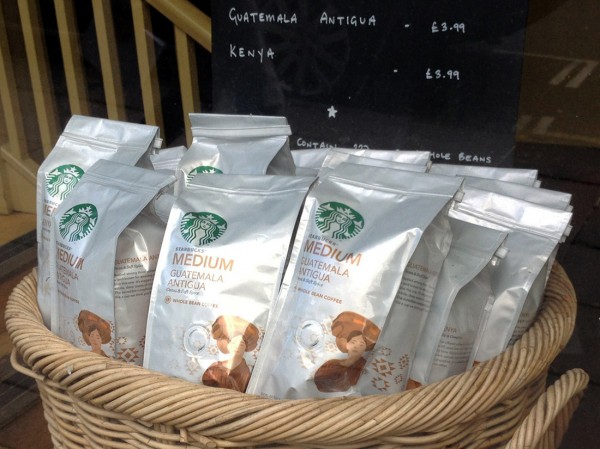 Coffee prices have been falling on international commodity markets. In August, the International Coffee Organization’s ‘composite indicator price’ fell to its lowest level since September 2009 (see). This reflects changes in demand and supply. According to the ICO’s monthly Coffee Market Report for August 2013 (see):
Coffee prices have been falling on international commodity markets. In August, the International Coffee Organization’s ‘composite indicator price’ fell to its lowest level since September 2009 (see). This reflects changes in demand and supply. According to the ICO’s monthly Coffee Market Report for August 2013 (see):
“Total exports in July 2013 reached 9.1 million bags, 6.6% less than July 2012, but total exports for the first ten months of the coffee year are still up 3.6% at 94.5 million bags. In terms of coffee consumption, an increase of 2.1% is estimated in calendar year 2012 to around 142 million bags, compared to 139.1 million bags in 2011.”
 But despite the fall in wholesale coffee prices, the price of a coffee in your local coffee shop, or of a jar of coffee in the supermarket, has not been falling. Is this what you would expect, given the structure of the industry? Is it simply a blatant case of the abuse of market power of individual companies, such as Starbucks, or even of oligopolistic collusion? Or are more subtle things going on?
But despite the fall in wholesale coffee prices, the price of a coffee in your local coffee shop, or of a jar of coffee in the supermarket, has not been falling. Is this what you would expect, given the structure of the industry? Is it simply a blatant case of the abuse of market power of individual companies, such as Starbucks, or even of oligopolistic collusion? Or are more subtle things going on?
The following articles look at recent trends in coffee prices at both the wholesale and retail level.
Articles
Coffee Prices Continue Decline Equities.com, Joel Anderson (17/9/13)
Arabica coffee falls Business Recorder (19/9/13)
Brazil Launches Measures to Boost Coffee Prices N. J. Douek, Jeffrey Lewis (7/9/13)
 Coffee Prices Destroyed Bloomberg (4/9/13)
Coffee Prices Destroyed Bloomberg (4/9/13)
The surprising reality behind your daily coffee: The CUP costs twice as much as the beans that are flown in from South America Mail Online, Mario Ledwith (23/9/13)
Coffeenomics: Four Reasons Why You Can’t Get a Discount Latte Bloomberg Businessweek, Kyle Stock (19/9/13)
Here’s who benefits from falling coffee costs CNBC, Alex Rosenberg (9/9/13)
The great coffee rip-off is no myth Sydney Morning Herald, BusnessDay, Michael Pascoe (23/9/13)
Monthly Coffee Market Report International Coffee Organization (August 2013)
Data
Coffee Prices ICO
ICO Indicator Prices – Annual and Monthly Averages: 1998 to 2013 ICO
Coffee, Other Mild Arabicas Monthly Price – US cents per Pound Index Mundi
Coffee, Robusta Monthly Price – US cents per Pound Index Mundi
Questions
- Why have wholesale coffee prices fallen so much since 2011? Are the reasons on the demand side, the supply side or both? Illustrate your answer with a supply and demand diagram.
- What determines the price elasticity of demand for coffee (a) on international coffee markets; (b) in supermarkets; (c) in coffee shops?
- Why has the gap between Arabica and Robusta coffee prices narrowed in recent months?
- Identify the reasons why coffee prices have not fallen in coffee shops.
- The cost of the coffee beans accounts for around 4% of the cost of a cup of coffee in a coffee shop. If coffee beans were to double in price and other costs and profits were to remain constant, by what percentage would a cup of coffee rise?
- How would you set about establishing whether oligopolistic collusion was taking place between coffee shops?
- What is meant by ‘hedging’ in coffee markets? How does hedging affect wholesale coffee prices?
- Explain the statement “If they have hedged correctly, Starbucks and such competitors as Green Mountain Coffee Roasters (GMCR) are likely paying far more for beans right now than current market rates.”
- What are “buffer stocks”. How can governments use buffer stocks (e.g. of coffee beans) to stabilise prices? What is the limitation on their power to do so? Can buffer stocks support higher prices over the long term?
- What are “coffee futures”? What determines their price? What effect will coffee future prices have on (a) the current price of coffee; (b) the actual price of coffee in the future?
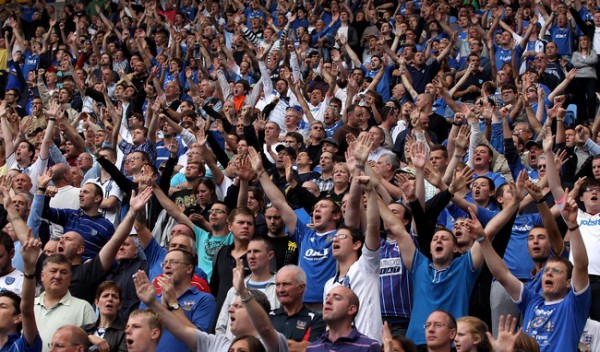 The BBC has recently published the results of its third report on average ticket prices for football for the top ten divisions in the UK. These include all four professional leagues in England (The Premier League, The Championship, League 1 and League 2), the top division in English non-league football (Conference Premier), the 4 professional leagues in Scotland (The Scottish Premier, The Scottish Championship, Scottish League One, Scottish League Two) and the top league in women’s football (Women’s Super League). Most of the headlines have focused on evidence of falling ticket prices in the 4 professional leagues in England.
The BBC has recently published the results of its third report on average ticket prices for football for the top ten divisions in the UK. These include all four professional leagues in England (The Premier League, The Championship, League 1 and League 2), the top division in English non-league football (Conference Premier), the 4 professional leagues in Scotland (The Scottish Premier, The Scottish Championship, Scottish League One, Scottish League Two) and the top league in women’s football (Women’s Super League). Most of the headlines have focused on evidence of falling ticket prices in the 4 professional leagues in England.
The BBC study focuses on four different categories of ticket.
– The most expensive adult season tickets
– The cheapest adult season tickets
– The most expensive adult match-day tickets
– The cheapest adult match-day tickets
The average price in each category is simply calculated as the price charged by each club in that category divided by the number of clubs. For example, the most expensive season ticket offered by Arsenal last year was £1955, whereas at Swansea it was £499. The average price was lower in all four categories for the three leagues in the English Football League (The Championship, League 1, League 2). For example, the price of the cheapest adult season tickets fell by 8.4% in the Championship, 1.6% in League 1 and 7.6% in League 2. Prices were also lower in three out of the four categories in the English Premier League (EPL). The only exception was the price of the cheapest adult season tickets which actually increased by 4.3%.
The overall trend in falling prices is in marked contrast to the previous year’s report that had found evidence of rising prices. For example the 2012 survey found that the average price of the cheapest adult match-day ticket increased by 11% on average across the EPL and EFL.
One factor that may be driving the apparent fall in prices in the English Football League is the falling attendances at games. Average attendance in 2012-13 was down 5% on the previous year – the second consecutive fall. It was 9% lower than in 2009-10 season. In complete contrast, attendance at EPL games were slightly up on the previous year and there were also record season ticket sales.
The increase in the average price of the cheapest adult season tickets in the EPL has received criticism from supporters groups. For example, The Football Supporters’ Federation called for far larger cuts in ticket prices, which they argued could have been funded by the big increase in the revenue from the latest TV deal. BskyB and BT paid a combined total of £3.018bn for the rights to show live games from the 2013-14 season to the 2015-16 season. This was an increase of £1.773bn on the previous deal. Malcolm Clarke, chair of the Football Supporters’ Federation, said
The Premier League has had an eye-watering increase in its media income. For example, they could knock £50 off the price of every single ticket of every single game for every single spectator in the Premier League this season and still have the same amount of money as they previously had.
Some have argued that it may also be in the commercial interests of the clubs to reduce prices. Professor Simon Chadwick from Coventry University commented that:
Lower prices and more fans can mean an increase in overall revenue, and there is also the secondary spend to consider: club merchandise, food and drink and so on.
However, care must be taken when interpreting this data because the report does not state how many fans actually pay the most expensive or cheapest price in each of the four categories. For example, the report found that Arsenal charged the highest price of £126 in the most expensive match-day ticket category. The club responded to this finding by stating that less than 100 people would actually pay this price at any given game!
Burton Albion was also reported as having the highest match-day ticket price of £30 for both League 1 and League 2. Once again the club responded by stating that only one or two of these tickets would be sold and car-parking, food and a programme were included in the price. Perhaps it would be more accurate to title the report “The average ticket price of the most expensive and cheapest seats for a football match”.
Some weighting system, such as that used to calculate the retail price index, would need to be used in order to obtain a more accurate picture of what is happening to average prices. It is possible that the price of tickets covered in the BBC report could be falling whilst the average price of all tickets could still be rising.
Articles
BBC Price of Football 2013: Average ticket prices fall BBC News (12/9/13)
Price of Football: The Premier League – then everybody else BBC News Matt Slater (12/9/13)
Price of Football: The Premier see some rises in cost BBC News Andy Cryer (12/9/13)
Price of Football: The Premier see some rises in cost BBC News (13/5/12)
Average ticket prices fall reveals Price of Football survey but Premier League continues to live in a world of its own The Independent (12/9/13)
Ben Robinson questions accuracy of BBC “Price of Football” survey BurtonMail David Broome (12/9/13)
Survey finds average prices of football match tickets have fallen The Independent (12/9/13)
Arsenal top BBC’s Price of Football table The Football Supporters Federation (12/9/13)
Questions
- Consider a number of factors that might determine the price of tickets for a particular football match.
- Draw a demand and supply diagram to illustrate what has happened in the market for tickets for matches in both the EPL and the EFL over the last couple of years.
- What non-price factors might have lead to the fall in demand for tickets for games in the English Football League?
- What does the evidence suggest about the income elasticity of demand for tickets at English Premier League games?
- In the article Professor Chadwick is quoted as saying that “Lower prices and more fans can mean an increase in overall revenue”. Using the concept of price elasticity of demand explain how this could be the case.
- Using a simple numerical example explain why the average price of tickets may be rising even though the price of tickets in the 4 categories in the BBC study are falling.
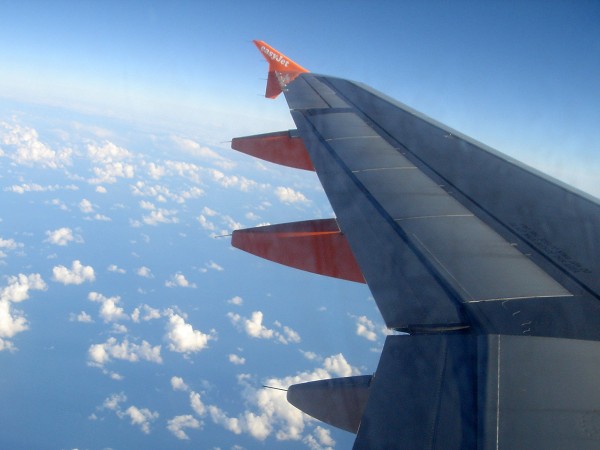 The pricing model for low-cost airline seats seems simple. As the seats get booked, so the price rises. Thus the later you leave it to book, the more expensive it will be. But, in fact, it’s not as simple as this. Seat prices sometimes come down as the take-off date approaches. So what is the pricing model?
The pricing model for low-cost airline seats seems simple. As the seats get booked, so the price rises. Thus the later you leave it to book, the more expensive it will be. But, in fact, it’s not as simple as this. Seat prices sometimes come down as the take-off date approaches. So what is the pricing model?
The general principle of raising prices as the plane fills up still applies. This enables the airline to discriminate between passengers. Holidaymakers and those with flexibility about when, and possibly where, to travel tend to have a relatively high price elasticity of demand. People who wish to travel at the last minute, such as businesspeople and those facing a family emergency, tend to have a much lower price elasticity of demand and would be prepared to pay a higher, possibly much higher, price.
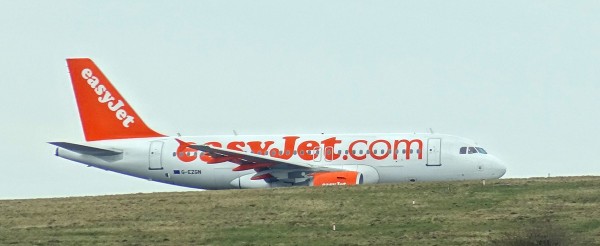 With relatively high fixed costs for each flight, low-cost airlines need to fill, or virtually fill, their planes if they are to make a profit. And it’s not just about the direct revenue from ticket sales. Low-cost carriers also rely on the revenue from selling extras, such as on-board refreshments, hold luggage, hotels, car hire and travel insurance. With variable costs being tiny, the pricing model is about maximising revenue for each flight. So the fuller the plane, the better it is for the airline.
With relatively high fixed costs for each flight, low-cost airlines need to fill, or virtually fill, their planes if they are to make a profit. And it’s not just about the direct revenue from ticket sales. Low-cost carriers also rely on the revenue from selling extras, such as on-board refreshments, hold luggage, hotels, car hire and travel insurance. With variable costs being tiny, the pricing model is about maximising revenue for each flight. So the fuller the plane, the better it is for the airline.
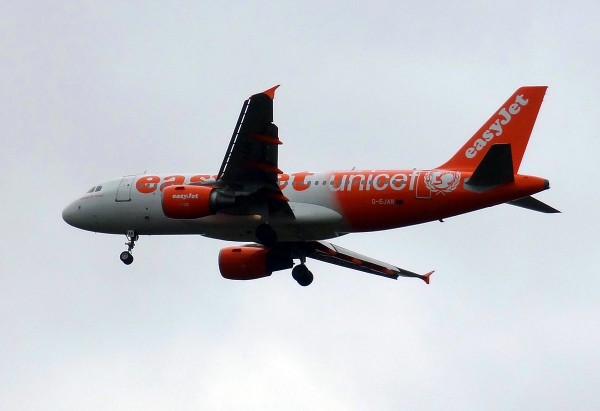 The airlines are very experienced in estimating demand over the period from a flight coming on sale and the departure date. If they get it right, then prices will indeed rise as take-off approaches. But sometimes they get it wrong. If, as time passes, a given flight is filling up too slowly, then it makes sense to be more flexible on prices, cutting them if necessary. Pricing may be easy in principle; but not always easy in practice!
The airlines are very experienced in estimating demand over the period from a flight coming on sale and the departure date. If they get it right, then prices will indeed rise as take-off approaches. But sometimes they get it wrong. If, as time passes, a given flight is filling up too slowly, then it makes sense to be more flexible on prices, cutting them if necessary. Pricing may be easy in principle; but not always easy in practice!
Article
Low-cost air fares: How ticket prices fall and rise BBC News, Erica Gornall (21/6/13)
Papers
Pricing strategies of low cost airlines Air Transport Group, Cranfield University, Keith J Mason (2002)
Pricing strategies of low-cost airlines: The Ryanair case study Journal of Air Transport Management, 15, Paolo Malighetti, Stefano Paleari and Renato Redondi (2009)
Questions
- Does a low-cost airline always charge lower prices than a traditional scheduled airline? If not, why not?
- Identify the various reasons why holidaymakers may have a relatively elastic demand for a particular flight?
- Explain the system of ‘buckets’ of seats?
- Are low-cost airlines engaging in price discrimination and, if so, which type?
- Are there any variable costs of operating a particular flight (assuming that the flight does actually take place)?
- If demand for a flight becomes less elastic as the date of departure gets nearer, why might a budget airline choose to lower the price, at least for a few days?
- Why can Ryanair operate with lower costs than easyJet?
- Would it be in low-cost airlines’ interests to charge more (a) to overweight people; (b) for using the toilet?
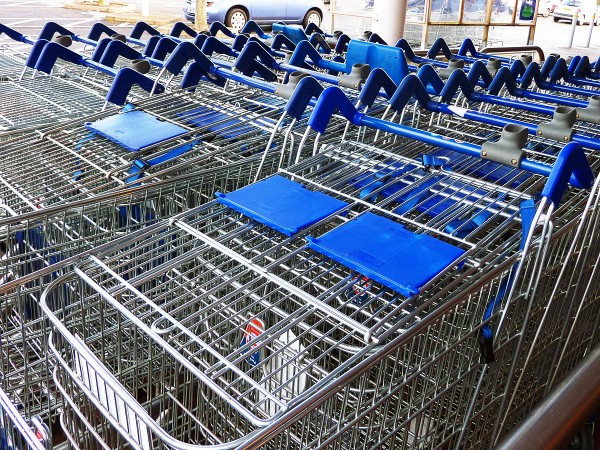 How important are emotions when you go shopping? Many people go shopping when they ‘need’ to buy something, whether it be a new outfit, food/drink, a new DVD release, a gift, etc. Others, of course, simply go window shopping, often with no intention of buying. However, everyone at some point has made a so-called ‘impulse’ purchase.
How important are emotions when you go shopping? Many people go shopping when they ‘need’ to buy something, whether it be a new outfit, food/drink, a new DVD release, a gift, etc. Others, of course, simply go window shopping, often with no intention of buying. However, everyone at some point has made a so-called ‘impulse’ purchase.
There is only one article below, which is from the BBC and draws on data released from the National Employment Savings Trust’s survey. This report suggests that British people spend over £1 billion every year on impulse buys – purchases that are not needed, were not intended and are often regretted once the ‘high’ has worn off. Often, it is the way in which a product is advertised or positioned that leads to a spontaneous purchase – seeing chocolate bars/sweets at the tills; a product offered at a huge discount advertised in the window of a shop; 2 for 1 purchases; points for loyalty etc. All of these and more are simple techniques used by retailers to encourage the impulse buy. As consumer psychologist, Dr. James Intriligator says:
Retailers have clever ways of manipulating customers to spend more but if you stick to your plans you can avoid being affected by their tactics.
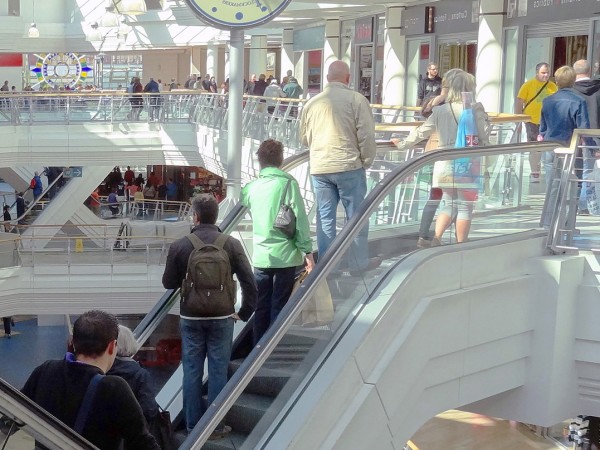
In other cases, it’s simply the frame of mind of the consumer that can lead to such purchases, such as being hungry when you’re food shopping or having an event to attend the next day and deciding to go window shopping, despite already having something to wear! Dr. Intriligator continues, saying:
Your ability to resist and make rational choices is diminished when your glucose levels are down … When you get irrational, you fall back on trusted brands, which often leads you to spend more money … Later in the shop, you’re more tired and less likely to resist [impulse buys]
But are such purchases irrational? One of the key assumptions made by economists (at least in traditional economics) is that consumers are rational. This implies that consumers weigh up marginal costs and benefits when making a decision, such as deciding whether or not to purchase a product. But, do impulse buys move away from this rational consumer approach? Is buying something because it makes you happy in the short term a rational decision? Behavioural economics is a relatively new ‘branch’ of economics that takes a closer look at the decisions of consumers and what’s behind their behaviour. The following article from the BBC considers the impulse buy and leaves you to consider the question of irrational consumers.
Article
How to stop buying on impulse BBC Consumer (30/5/13)
Questions
- If the marginal benefit of purchasing a television outweighs the marginal cost, what is the rational response?
- Using the concept of marginal cost and benefit, illustrate them on a diagram and explain how equilibrium should be reached.
- What is behavioural economics?
- What are the key factors that can be used to explain impulse buys?
- How can framing help to explain irrational purchases?
- If a product is advertised at a significant discount, what figure for elasticity is it likely to have to encourage further purchases in-store?
- Is bulk-buying always a bad thing?
 Over the past few years lobster prices in Maine have tumbled. Eight years ago the price paid to fishermen was around $4.60 per pound. Today it’s around $2.20. The problem is one of booming lobster populations and the dominance of lobster in catches. Last year’s haul was double that of a decade ago and, in some waters, six times higher.
Over the past few years lobster prices in Maine have tumbled. Eight years ago the price paid to fishermen was around $4.60 per pound. Today it’s around $2.20. The problem is one of booming lobster populations and the dominance of lobster in catches. Last year’s haul was double that of a decade ago and, in some waters, six times higher. this year the State of Maine has established a $2 million marketing collaborative. Another solution is to find new markets.
this year the State of Maine has established a $2 million marketing collaborative. Another solution is to find new markets. US lobster fishermen’s ‘problem of plenty’ BBC News, Jonny Dymond (5/10/13)
US lobster fishermen’s ‘problem of plenty’ BBC News, Jonny Dymond (5/10/13) Maine lobstermen in a pinch over low prices, record catch: Part 1, Part 2, Part 3 Aljazeera America, Adam May (11/10/13)
Maine lobstermen in a pinch over low prices, record catch: Part 1, Part 2, Part 3 Aljazeera America, Adam May (11/10/13)






